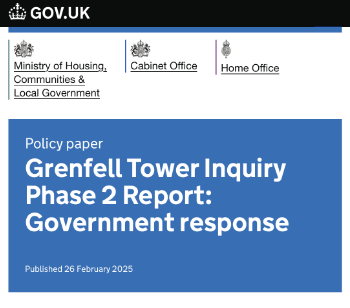Allowances in construction
The term allowance might generally be defined as an amount of something that is allowed or permitted, often within rules, regulations or contractual agreements, commonly in relation money but not exclusively. Allowances can also be used in relation to time, distances, volumes, risks and benefits. Below are some examples of allowances that might be found in relation to the construction of buildings.
In a construction contract allowances are often used to mean budgets that are established for specific scopes of the work that cannot be clearly defined at the time of bid, but that are set at a maximum estimate not to be exceed. A provisional sum is a type of allowance (or best guess), usually estimated by a cost consultant, that is inserted into tender documents for a specific element of the works that is not yet defined in enough detail for tenderers to accurately price.
Time Risk Allowance (TRA) is the amount of time allowed by a contractor in programming activities to allow for the risk of delay should problems arise, such as poor weather and inefficiencies on site that have a reasonable probability of occurring but are not significant enough to merit inclusion in the risk register. It is a term used in the NEC along with 'float’ (Total and terminal floats) being the time an activity can be delayed from its early start date without delaying the planned completion date.
Risk allowance according to NRM1 (Order of cost estimating and cost planning for capital building work) the term 'risk allowance' refers to 'the amount aded to the base cost estimate for items that cannot be precisely predicted to arrive at the cost limit'. According to the International Cost Management Standard (Global Consistency in Presenting Construction Life Cycle Costs and Carbon Emissions, 2021), risk allowance is 'a quantitative allowance set aside as a precaution against risks and future needs to allow for the uncertainty of outcome. This may include an allowance for optimism bias and a contingency sum’ (Contingency allowance).
Fitting allowance in plumbing terms is the extra part of pipe connections minus the thread engagement (the section of pipe where the male and female elements cross) For example in an elbow joint, the fitting allowance is likely to be the outermost bend in the elbow (minus the two sections design to receive and over lap with the new pipe fitting).
Machining allowance is a layer of oversized material calculated on a raw product prior to final machining which will be removed during the final machining of the product.
Corrosion allowance is a layer of oversized material calculated on a product to allow for any corrosion likely to occur over its longer use to allow it to still function. For example oversized links of a metal chain to allow for future corrosion.
Pattern allowances are used to describe over sized moulds to account for shrinkage that is likely to occur from each casting.
Capital allowances are a group of UK income tax and corporation tax reliefs that are available to businesses for capital expenditure. The Enhanced Capital Allowance (ECA) scheme more specifically was a scheme that allowed businesses to write off the entire cost of any product included on the Energy Technology List (ETL) against taxable profits, in 2018 it was announced that the ECA and First Year Tax Credits Scheme (FYTC) would end from April 2020 for products on the ETL which was updated to remove references to the ECA.
Business premises renovation allowance (BPRA) was a temporary 100% capital allowance on expenditure incurred on or in connection with the conversion, renovation or repair of business premises, introduced in the Capital Allowances Act 2001. It was intended to encourage investment in derelict or unused properties in disadvantaged areas in order to bring them back into use, it was subsequently withdrawn in 2017.
Industrial Buildings Allowance (IBA) was introduced between 1945 and 2008, they were withdrawn in 2011. It was part of the Income Tax Act to boost post-war productivity in industry, giving a tax relief on the capital cost of constructing or purchasing a manufacturing or processing building. It was also broadened to include allowances on infrastructure such as tunnels, bridges, roads used for highway concessions, qualifying hotels and commercial buildings in enterprise zones.
Residual uncertainty allowance according to the Culvert, screen and outfall manual, (CIRIA C786) is ‘An allowance added on to design water level for uncertainty in hydrology and hydraulic assessment.’ whilst Freeboard allowance covers uncertainty for any other physical processes.
Domestic load connection allowance according to The Energy White Paper, Powering our Net Zero Future (CP 337) by HM Government (2020) is ‘the duty that network owners have to provide the first 10 metres of a gas connection free of charge to customers.’
Local housing allowance according to RICS Valuation of land for affordable housing (2016) ‘is housing benefit available to low income households.'
[edit] Related articles on Designing Buildings
- Business premises renovation allowance.
- Capital allowance.
- Domestic load connection allowance.
- Enhanced Capital Allowance scheme.
- Industrial Buildings Allowance (IBA).
- Local housing allowance.
- Preliminary business case for construction project.
- Risk allowance.
- Residual uncertainty allowance.
- Time Risk Allowance TRA.
Featured articles and news
CIOB student competitive construction challenge Ireland
Inspiring a new wave of Irish construction professionals.
Challenges of the net zero transition in Scotland
Skills shortage and ageing workforce hampering Scottish transition to net zero.
Private rental sector, living standards and fuel poverty
Report from the NRH in partnership with Impact on Urban Health.
.Cold chain condensing units market update
Tracking the evolution of commercial refrigeration unit markets.
Attending a conservation training course, personal account
The benefits of further learning for professsionals.
Restoring Alexander Pope's grotto
The only surviving part of his villa in Twickenham.
International Women's Day 8 March, 2025
Accelerating Action for For ALL Women and Girls: Rights. Equality. Empowerment.
Lack of construction careers advice threatens housing targets
CIOB warning on Government plans to accelerate housebuilding and development.
Shelter from the storm in Ukraine
Ukraine’s architects paving the path to recovery.
BSRIA market intelligence division key appointment
Lisa Wiltshire to lead rapidly growing Market Intelligence division.
A blueprint for construction’s sustainability efforts
Practical steps to achieve the United Nations Sustainable Development Goals.
Timber in Construction Roadmap
Ambitious plans from the Government to increase the use of timber in construction.
ECA digital series unveils road to net-zero.
Retrofit and Decarbonisation framework N9 launched
Aligned with LHCPG social value strategy and the Gold Standard.
Competence framework for sustainability
In the built environment launched by CIC and the Edge.
Institute of Roofing members welcomed into CIOB
IoR members transition to CIOB membership based on individual expertise and qualifications.
Join the Building Safety Linkedin group to stay up-to-date and join the debate.
Government responds to the final Grenfell Inquiry report
A with a brief summary with reactions to their response.
























